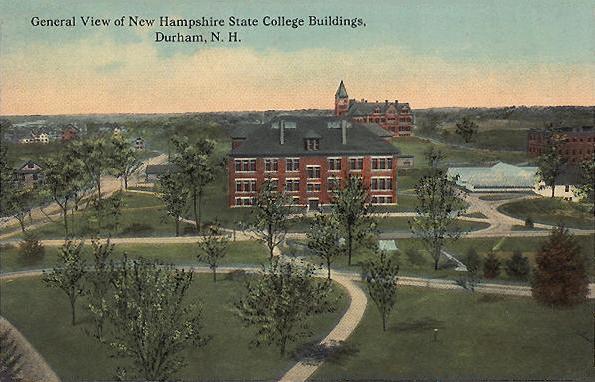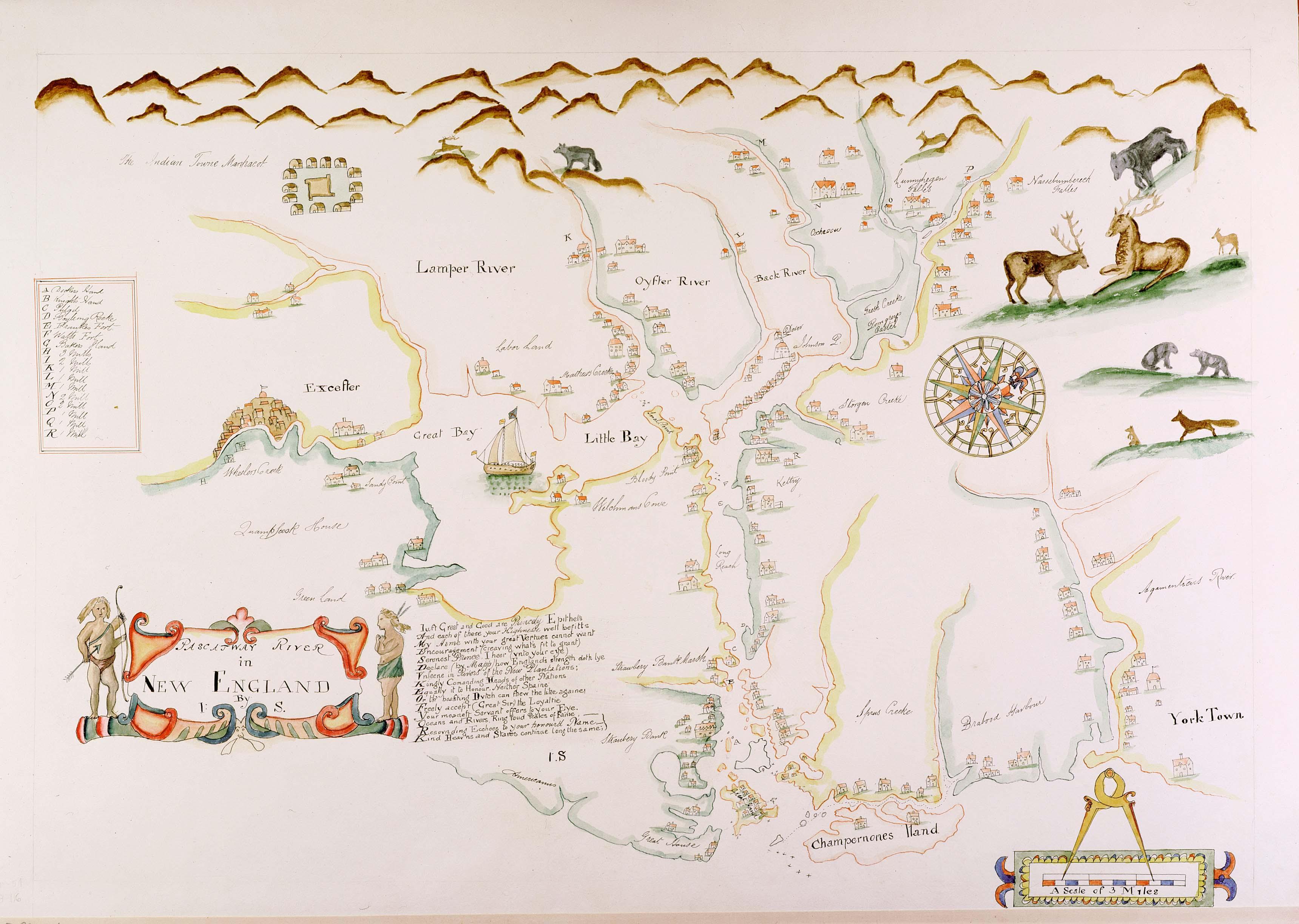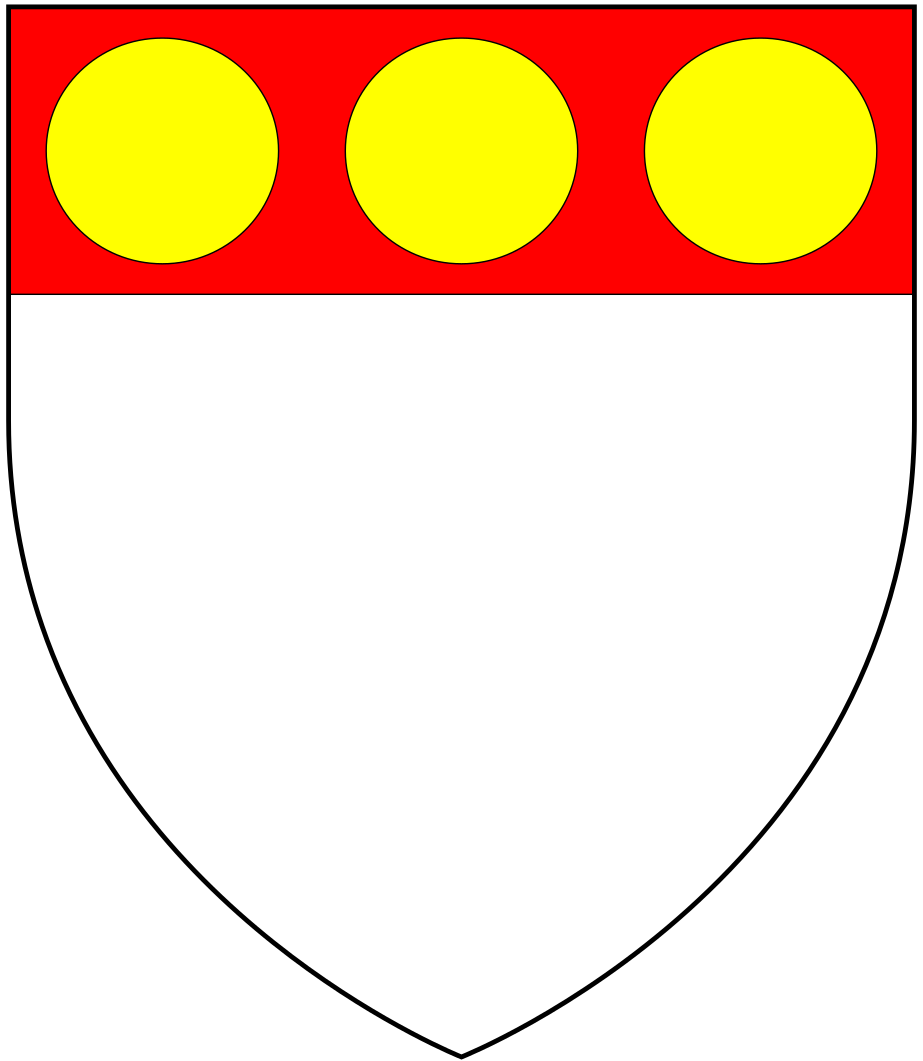|
Durham, New Hampshire
Durham is a town in Strafford County, New Hampshire, United States. The population was 15,490 at the 2020 census, up from 14,638 at the 2010 census.United States Census BureauU.S. Census website 2010 Census figures. Retrieved March 23, 2011. Durham is home to the University of New Hampshire. The primary settlement in the town, where 11,147 people resided at the 2020 census, is defined by the U.S. Census Bureau as the Durham census-designated place (CDP) and includes the densely populated portion of the town centered on the intersection of New Hampshire Route 108 and Main Street, which includes the university that dominates the town. History Durham sits beside Great Bay at the mouth of the Oyster River, an ideal location for people who lived close to the land, like the Western Abenaki and their ancestors who've lived in the region for an estimated 11,000 years. The Shankhassick (now Oyster) River provided shellfish and access to the north woods for hunting and trapping; ... [...More Info...] [...Related Items...] OR: [Wikipedia] [Google] [Baidu] |
Thompson Hall (University Of New Hampshire)
Thompson Hall, commonly referred to locally as "T-Hall", is one of the central buildings on the campus of the University of New Hampshire in Durham, New Hampshire, United States. A large brick and stone building, it was designed by Concord, New Hampshire, Concord architects Dow & Randlett and built in 1892. It was the first building to be built on the Durham campus, and was named for Benjamin Thompson (farmer), Benjamin Thompson, a farmer who left his entire Durham estate to the state for use as the college campus. The building was listed on the National Register of Historic Places in 1996. Architecture Thompson Hall is a Romanesque Revival architecture, Romanesque Revival structure set on a knoll just south of Main Street, with a broad expanse of lawn in between. Its features are characteristic of the style, with heavy massing, granite trim, and a tall clock tower. Although it is nominally 2-1/2 stories in height, it has a raised basement below, and its slate hip roof is pierced b ... [...More Info...] [...Related Items...] OR: [Wikipedia] [Google] [Baidu] |
New Hampshire Route 108
New Hampshire Route 108 is a north–south state highway in Rockingham and Strafford counties in southeastern New Hampshire. The southern terminus of NH 108 is at the Massachusetts state line in Plaistow. The northern terminus is at an intersection with New Hampshire Route 125 and New Hampshire Route 202A in downtown Rochester. At its southern end, NH 108 connects to Massachusetts Route 108, a very short state route which continues south for to Massachusetts Route 110 in Haverhill. NH 108 is notable in being one of two routes (the other being New Hampshire Route 9) to intersect both U.S. Route 4 and New Hampshire Route 4 (a rare case of two completely separate routes in one state having the same number). Route description Massachusetts Route 108 Route 108 begins at an intersection with Route 110 north of downtown Haverhill, Massachusetts, near Kenoza Lake. The highway proceeds due north, passing underneath I-495 before crossing into Plaistow, New Hampshire, where it bec ... [...More Info...] [...Related Items...] OR: [Wikipedia] [Google] [Baidu] |
Claude-Sébastien De Villieu
Claude-Sébastien de Villieu ( fl. 1674–1705) was a French military officer best known for his service in New France. In addition to service during King William's War, he served for a time as military governor of Acadia. According to his own statement, he served for fifteen years on the battlefields of Europe, beginning in 1674, before coming to New France. He participated in the defense of Quebec when it was attacked by New England colonists in 1690. In 1692 he married Judith Leneuf, the daughter of Michel Leneuf de La Vallière de Beaubassin. He led French forces in the 1694 raid on Durham, New Hampshire, after which he was rewarded with command of Fort Nashwaak (at present-day Fredericton, New Brunswick). He participated with Jean-Vincent d'Abbadie de Saint-Castin in Pierre Le Moyne d'Iberville's successful Siege of Pemaquid in 1696. The ship carrying him from Pemaquid (in present-day Bristol, Maine) was captured, and he was imprisoned in Boston. Eventually released ... [...More Info...] [...Related Items...] OR: [Wikipedia] [Google] [Baidu] |
Raid On Oyster River
The Raid on Oyster River (also known as the Oyster River Massacre) happened during King William's War, on July 18, 1694, at present-day Durham, New Hampshire. Historical context Massachusetts responded to the Siege of Pemaquid (1689) by sending out 600 men to the border region. Led by Major Jeremiah Swaine of Reading, Massachusetts, the soldiers met on August 28, 1689, and then scoured the region. Despite Swaine's presence, the natives attacked Oyster River (Durham, New Hampshire) and killed 21 people, taking several others captive. In 1693, the English at Boston had entered into peace and trade negotiations with the Abenaki tribes in eastern Massachusetts. The French at Quebec under Governor Frontenac wished to disrupt the negotiations and sent Claude-Sébastien de Villieu in the fall of 1693 into present-day Maine, with orders to "place himself at the head of the Acadian Indians and lead them against the English." Villieu spent the winter at Fort Nashwaak. The Indian bands ... [...More Info...] [...Related Items...] OR: [Wikipedia] [Google] [Baidu] |
King William's War
King William's War (also known as the Second Indian War, Father Baudoin's War, Castin's War, or the First Intercolonial War in French) was the North American theater of the Nine Years' War (1688–1697), also known as the War of the Grand Alliance or the War of the League of Augsburg. It was the first of six colonial wars (see the four French and Indian Wars, Father Rale's War and Father Le Loutre's War) fought between New France and New England along with their respective Native allies before France ceded its remaining mainland territories in North America east of the Mississippi River in 1763. For King William's War, neither England nor France thought of weakening their position in Europe to support the war effort in North America. New France and the Wabanaki Confederacy were able to thwart New England expansion into Acadia, whose border New France defined as the Kennebec River in southern Maine. According to the terms of the 1697 Peace of Ryswick that ended the Nine Years' ... [...More Info...] [...Related Items...] OR: [Wikipedia] [Google] [Baidu] |
Subsistence
A subsistence economy is an economy directed to basic subsistence (the provision of food, clothing, shelter) rather than to the market. Henceforth, "subsistence" is understood as supporting oneself at a minimum level. Often, the subsistence economy is moneyless and relies on natural resources to provide for basic needs through hunting, gathering, and agriculture. In a subsistence economy, economic surplus is minimal and only used to trade for basic goods, and there is no industrialization. In hunting and gathering societies, resources are often if not typically underused. In human history, before the first cities, all humans lived in a subsistence economy. As urbanization, civilization, and division of labor spread, various societies moved to other economic systems at various times. Some remain relatively unchanged, ranging from uncontacted peoples, to marginalized areas of developing countries, to some cultures that choose to retain a traditional economy. Capital can be gener ... [...More Info...] [...Related Items...] OR: [Wikipedia] [Google] [Baidu] |
Maine
Maine () is a state in the New England and Northeastern regions of the United States. It borders New Hampshire to the west, the Gulf of Maine to the southeast, and the Canadian provinces of New Brunswick and Quebec to the northeast and northwest, respectively. The largest state by total area in New England, Maine is the 12th-smallest by area, the 9th-least populous, the 13th-least densely populated, and the most rural of the 50 U.S. states. It is also the northeasternmost among the contiguous United States, the northernmost state east of the Great Lakes, the only state whose name consists of a single syllable, and the only state to border exactly one other U.S. state. Approximately half the area of Maine lies on each side of the 45th parallel north in latitude. The most populous city in Maine is Portland, while its capital is Augusta. Maine has traditionally been known for its jagged, rocky Atlantic Ocean and bayshore coastlines; smoothly contoured mountains; heavily f ... [...More Info...] [...Related Items...] OR: [Wikipedia] [Google] [Baidu] |
Piscataqua River
The Piscataqua River (Abenaki: ''Pskehtekwis'') is a tidal river forming the boundary of the U.S. states of New Hampshire and Maine from its origin at the confluence of the Salmon Falls River and Cochecho River. The drainage basin of the river is approximately , including the subwatersheds of the Great Works River and the five rivers flowing into Great Bay: the Bellamy, Oyster, Lamprey, Squamscott, and Winnicut. The river runs southeastward, with New Hampshire to the south and west and Maine to the north and east, and empties into the Gulf of Maine east of Portsmouth, New Hampshire. The last before the sea are known as Portsmouth Harbor and have a tidal current of around . The cities/towns of Portsmouth, New Castle, Newington, Kittery and Eliot have developed around the harbor. History Named by the area's original Abenaki inhabitants, the word ''Piscataqua'' is believed to be a combination of ''peske'' (branch) with ''tegwe'' (a river with a strong current, possibl ... [...More Info...] [...Related Items...] OR: [Wikipedia] [Google] [Baidu] |
John Mason (c
John Mason may refer to: Entertainment * John Mason (playwright) (fl. 1609), British playwright * John Mason (poet) (1646–1694), English clergyman, poet, and hymn-writer * John B. Mason (1858–1919), American stage actor * John Mason (artist) (1927–2019), ceramic artist from Los Angeles, California * John M. Mason (musician) (1940–2011), Scottish solicitor, musician, composer and conductor * Ralph Mason (John Francis Mason, 1938–2016), English tenor Politics U.S. * John Thomson Mason (1765–1824), American jurist and Attorney General of Maryland in 1806 * John Thomson Mason (1787–1850), American lawyer, United States marshal * John Y. Mason (1799–1859), U.S. Representative from Virginia and Secretary of the Navy * John Calvin Mason (1802–1865), U.S. Representative from Kentucky * John Thomson Mason Jr. (1815–1873), U.S. Representative from Maryland, son of John Thomson Mason (1765–1824) U.K. * John Mason (15th-century MP), Member of Parliament for Lewes a ... [...More Info...] [...Related Items...] OR: [Wikipedia] [Google] [Baidu] |
Ferdinando Gorges
Sir Ferdinando Gorges ( – 24 May 1647) was a naval and military commander and governor of the important port of Plymouth in England. He was involved in Essex's Rebellion against the Queen, but escaped punishment by testifying against the main conspirators. His early involvement in English trade with and settlement of North America as well as his efforts in founding the Province of Maine in 1622 earned him the title of the "Father of English Colonization in North America," even though Gorges himself never set foot in the New World. Origins Ferdinando Gorges was born between 1565 and 1568, probably in Clerkenwell, in Middlesex where the family maintained their London town house, but possibly at the family's manor of Wraxall, in Somerset. He was the second son of Edward Gorges of Wraxall, by his wife Cicely Lygon. The circumstances of his father's death aged 31 suggested to Baxter (Gorges's first biographer) that Ferdinando was born at about the time of his father's death on ... [...More Info...] [...Related Items...] OR: [Wikipedia] [Google] [Baidu] |
James VI And I
James VI and I (James Charles Stuart; 19 June 1566 – 27 March 1625) was King of Scotland as James VI from 24 July 1567 and King of England and Ireland as James I from the union of the Scottish and English crowns on 24 March 1603 until his death in 1625. The kingdoms of Scotland and England were individual sovereign states, with their own parliaments, judiciaries, and laws, though both were ruled by James in personal union. James was the son of Mary, Queen of Scots, and a great-great-grandson of Henry VII, King of England and Lord of Ireland, and thus a potential successor to all three thrones. He succeeded to the Scottish throne at the age of thirteen months, after his mother was compelled to abdicate in his favour. Four different regents governed during his minority, which ended officially in 1578, though he did not gain full control of his government until 1583. In 1603, he succeeded Elizabeth I, the last Tudor monarch of England and Ireland, who died childless. He ... [...More Info...] [...Related Items...] OR: [Wikipedia] [Google] [Baidu] |
Abenaki
The Abenaki (Abenaki: ''Wαpánahki'') are an Indigenous peoples of the Northeastern Woodlands of Canada and the United States. They are an Algonquian-speaking people and part of the Wabanaki Confederacy. The Eastern Abenaki language was predominantly spoken in Maine, while the Western Abenaki language was spoken in Quebec, Vermont, and New Hampshire. While Abenaki peoples have shared cultural traits, they did not historically have a centralized government. They came together as a post-contact community after their original tribes were decimated by colonization, disease, and warfare. Names The word ''Abenaki'' and its syncope, ''Abnaki,'' are both derived from ''Wabanaki'', or ''Wôbanakiak,'' meaning "People of the Dawn Land" in the Abenaki language. While the two terms are often confused, the Abenaki are one of several tribes in the Wabanaki Confederacy. The name is spelled several ways including Abnaki, Abinaki, and Alnôbak. ''Wôbanakiak'' is derived from ''wôban'' ( ... [...More Info...] [...Related Items...] OR: [Wikipedia] [Google] [Baidu] |







